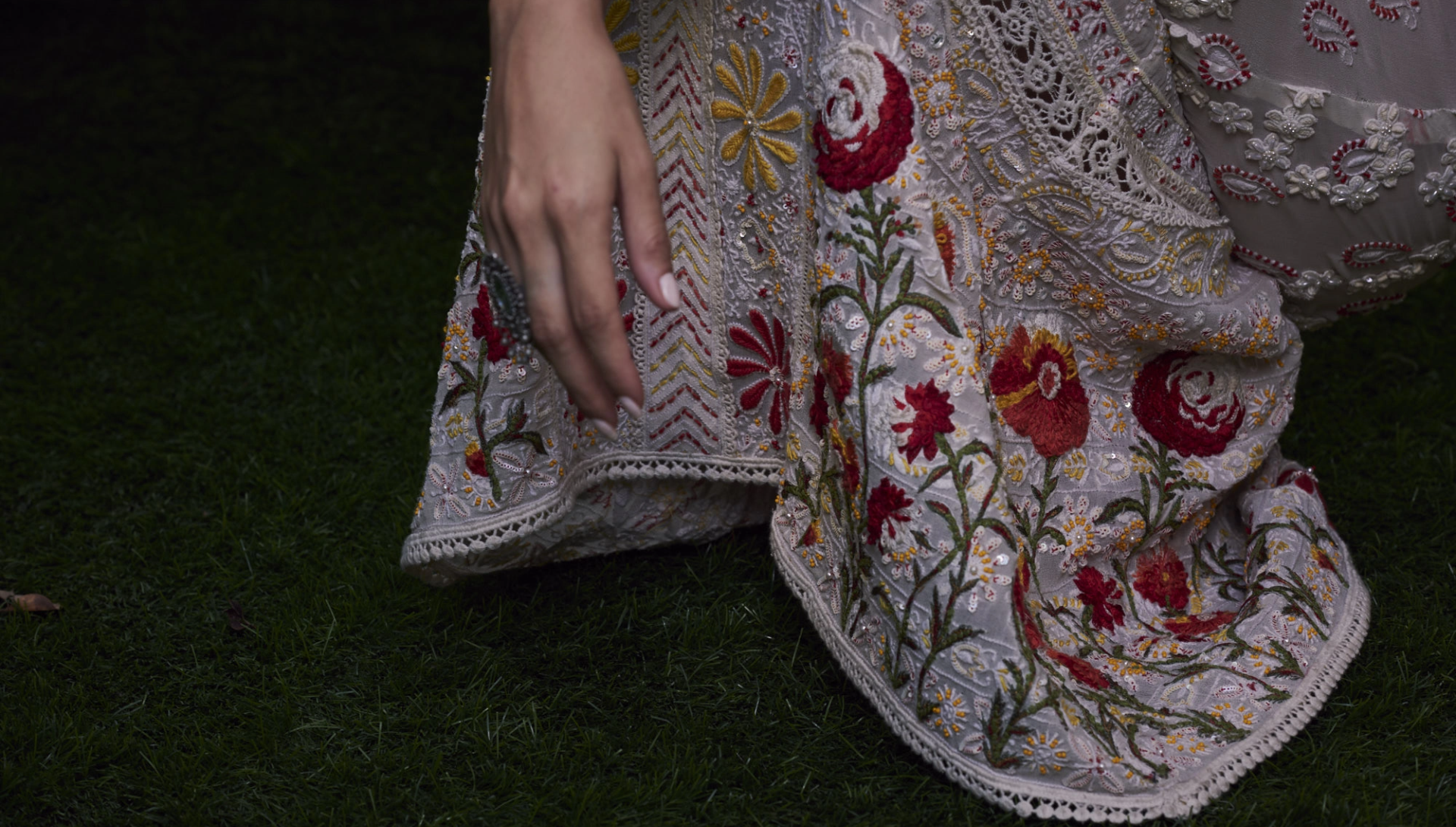
Stitches of Memory: The Living Language of Indian Embroidery
Stitches Beyond Thread
In a world of rapid production and fleeting trends, there exists a craft that thrives on patience, precision, and poetry—Chikankari. An age-old hand embroidery technique from the heart of Lucknow, Chikankari is not just an art form; it’s a quiet rebellion against mass-made fashion. At Payal Jain, our creative process is deeply entwined with traditions like these—slow, soulful, and rich with meaning.
Whispers & Grandeur: Chikankari and Zardozi
I first encountered Chikankari not in a museum, but on the wrists of my grandmother, on the gentle folds of her saree, fine as whispers. The grace of white thread on white muslin—it was almost spiritual. Years later, walking through the narrow lanes of Lucknow, I watched nimble fingers etch those same patterns onto fabric stretched taut across wooden frames. There was something prayerful in that rhythm. No loud proclamations, only quiet poetry—jaali, murri, phanda—each stitch like a syllable of an old verse. That minimal elegance, that devotion to craft without spectacle, has remained in my design DNA ever since. In stark contrast, Zardozi enters the room with a shimmer and a song. Born in the opulence of Mughal courts, this embroidery of gold and silver wire has always carried an aura of grandeur. But what draws me in is not just the dazzle—it’s the discipline. The weight of history in every motif. In a dimly lit karkhana in Bareilly, I once watched an old ustad bend over his work with a kind of sacred focus. The needle danced with metal coils, sequins, beads, and pearls, all carefully orchestrated into symmetrical beauty. Zardozi doesn’t just decorate a garment—it enshrines it.
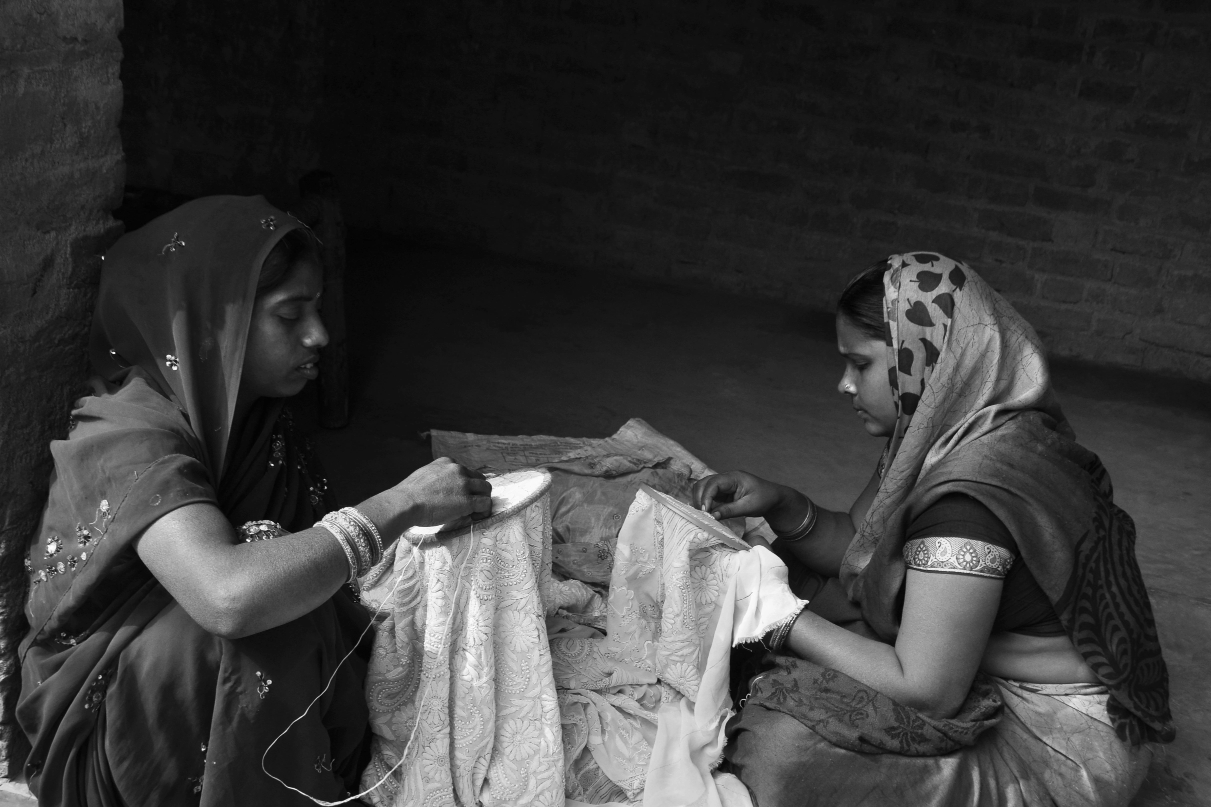
Stories in Thread: Kantha and Phulkari
Then there’s Kantha, from the heart of Bengal. It’s not a technique so much as a philosophy—of reuse, of storytelling, of making beauty out of the everyday. Layers of old saris repurposed into quilts, each line of running stitch like the heartbeat of the woman who made it. There’s a kind of emotional honesty in Kantha that I’ve always been drawn to. I remember designing a collection where I used Kantha as the only embellishment—minimal, raw, and full of memory. Somehow, it felt like the fabric itself was speaking, not just wearing its history, but retelling it. Phulkari, from Punjab, is another form that doesn’t whisper—it laughs. It sings in bright silk threads on coarse khaddar, a riot of colors bursting through geometric patterns. It began as an expression of love—embroidered by women onto shawls and odhnis for their daughters’ trousseaux. There’s something so life-affirming about Phulkari: it’s bold, unapologetic, and radiant with joy. I once met an elderly artisan who told me that Phulkari was their way of planting flowers in a world where they couldn’t afford gardens. That image has stayed with me.
Mirrors and Memories: Rabari Traditions
Across Kutch and Sindh, Rabari embroidery stitches mirrors into dreams. There, embroidery is not embellishment—it’s biography. Every piece marks a woman’s life: her marriage, her children, her journey. I remember visiting a village in Gujarat where the women’s work was so elaborate, it felt like each garment was a living museum of their inner world. Working with these women taught me that embroidery can be both fiercely personal and universally powerful.
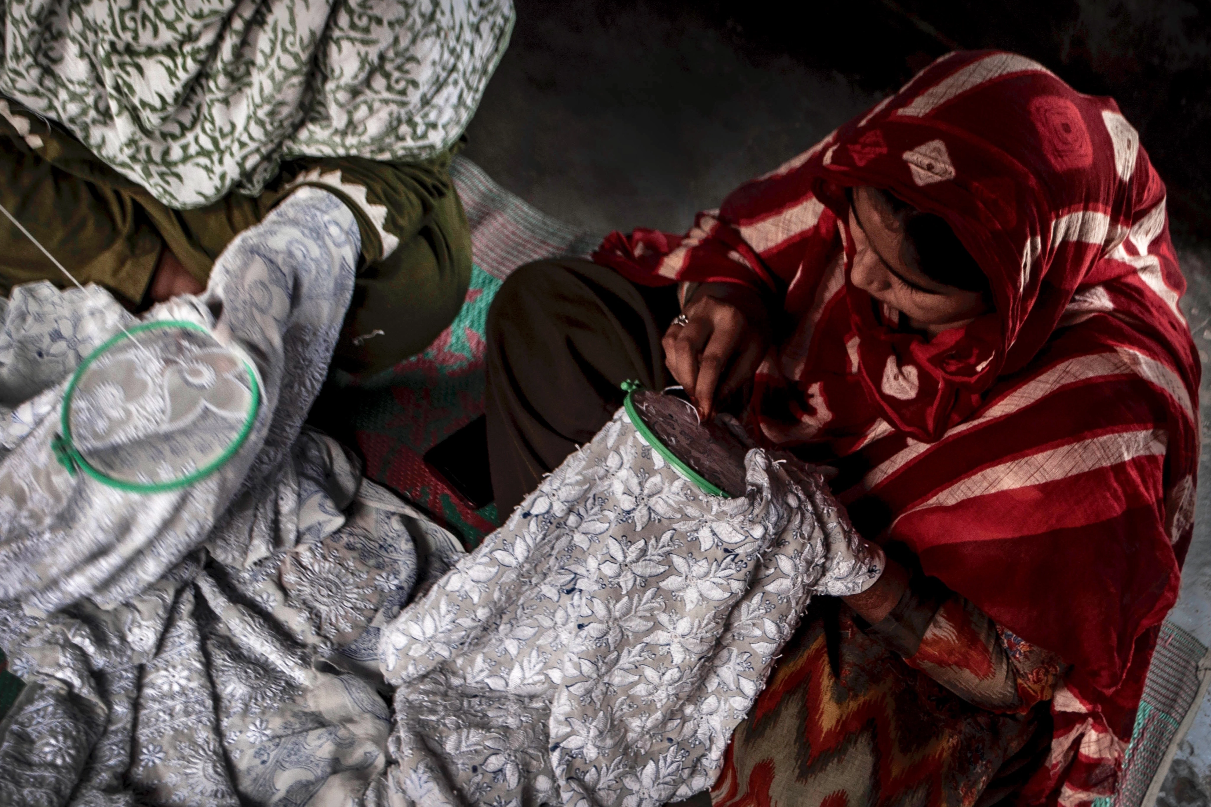
Calligraphy in Cloth: Kashmiri Craft
In Kashmir, Aari and Sozni stitches glide like calligraphy across pashmina. The detailing is impossibly fine—thousands of stitches to form a single petal. I’ve seen pieces that took over a year to complete, they’re makers too modest to claim the artistry. The restraint, the quiet dignity of Kashmiri embroidery, mirrors the landscape it comes from—understated, sublime, eternal.
The Soulprint of Craft
And then, there are the lesser-known jewels. Banjara embroidery, wild and proud, with its coins, shells, and tassels. Lambadi work from Telangana, Toda embroidery from the Nilgiris, Kasuti from Karnataka—each bearing a cultural soulprint. Each made not in design studios, but in homes and hearts. And somehow, all of them have touched my work in different ways over the years—not always overtly, but like echoes or shadows shaping the edges of what I create. To me, embroidery is not about decoration—it is remembrance. It is resilience. It is reclaiming space in a world that often forgets to look closely. These stitches have taught me to slow down, to pay attention, to value imperfection and humanity over mass perfection. And most of all, they have taught me that luxury is not in gold or grandeur, but in time, tradition, and the hand that makes.
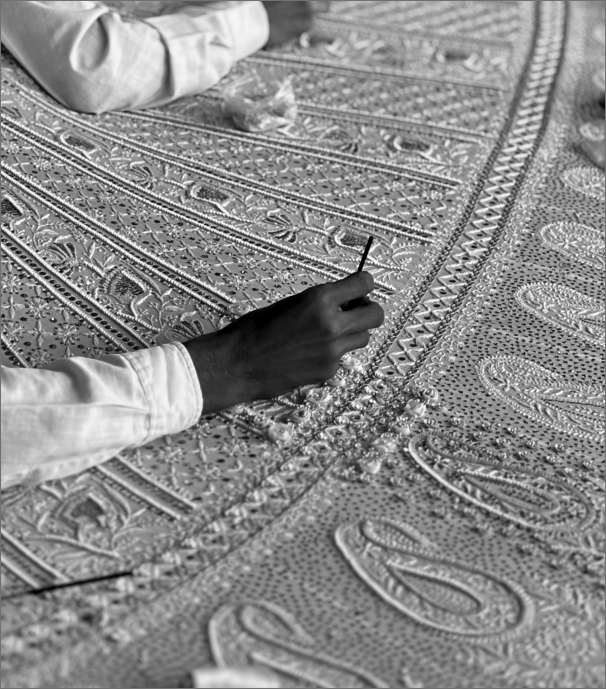
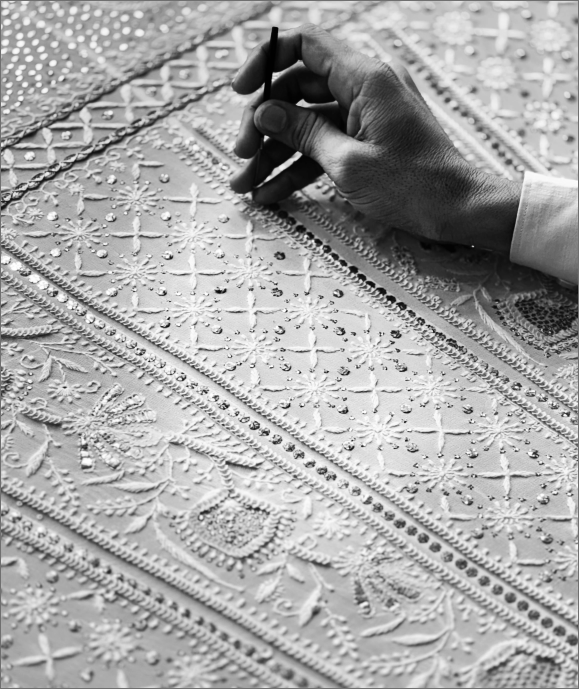
Your Journey with Us Begins Here

